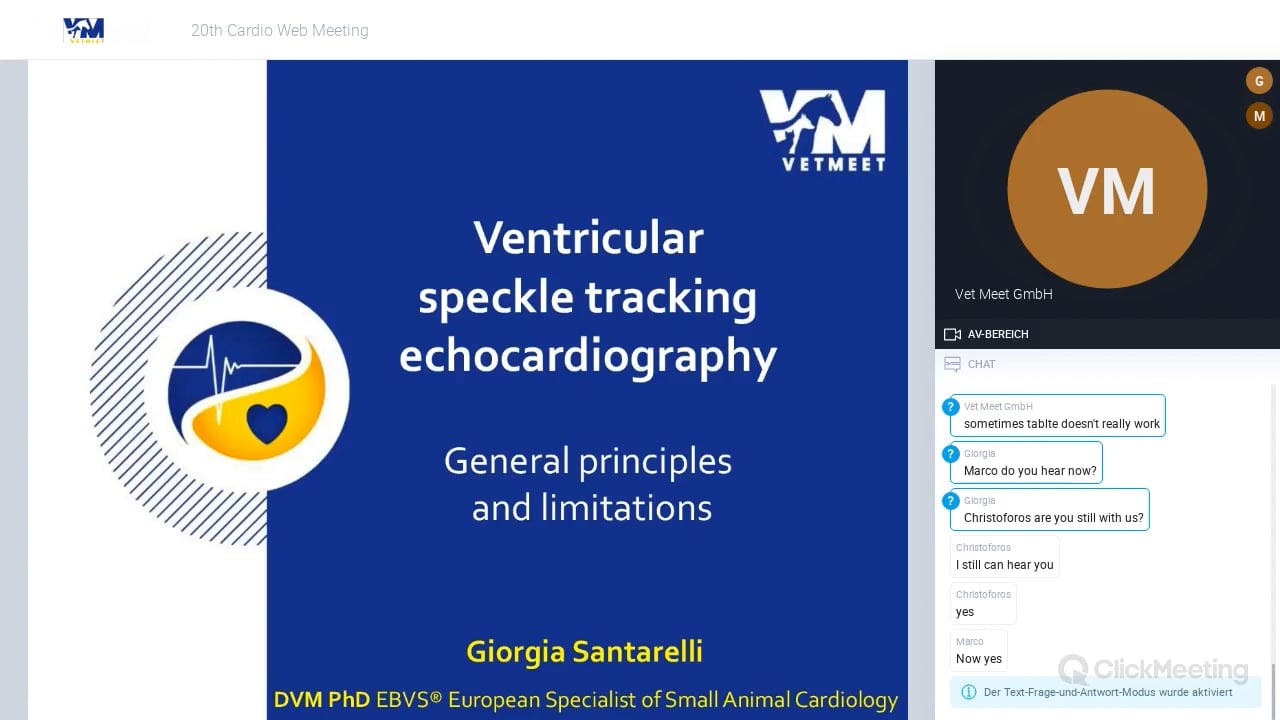Ventricular speckle tracking echocardiography: general principles and limitations
Description
Two-dimensional (2-D) speckle tracking echocardiography (STE) is a relatively new imaging technique, based on myocardial deformation analysis and used in human and veterinary cardiology to aid the assessment of cardiac function. It employs a post-processing software algorithm that tracks over time the motion of fixed patterns of speckles, which represent a series of artefacts generated by reflection, refraction and scattering of ultrasound beams, present in grayscale 2-D echocardiographic images. Unique or nearly unique patterns of speckles are contained in specific regions of interrogation and act as natural acoustic fingerprints. Through tracking of the speckles of a myocardial region over time, the algorithm can calculate the direction and velocity of movement of a segment. Via comparison of two different segments of the myocardium, parameters such as strain and strain rate (SR) can be calculated
Topics
TWO-DIMENSIONAL SPECKLE TRACKING ECHOCARDIOGRAPHY AND STRAIN ANALYSIS
You need to log in to view your current credits. Login
Speaker

 Hill's Vorbereitungskurs Ernährungsberatung
Hill's Vorbereitungskurs Ernährungsberatung Hill's Aufbaukurs - Ernährung des Hautpatienten
Hill's Aufbaukurs - Ernährung des Hautpatienten


